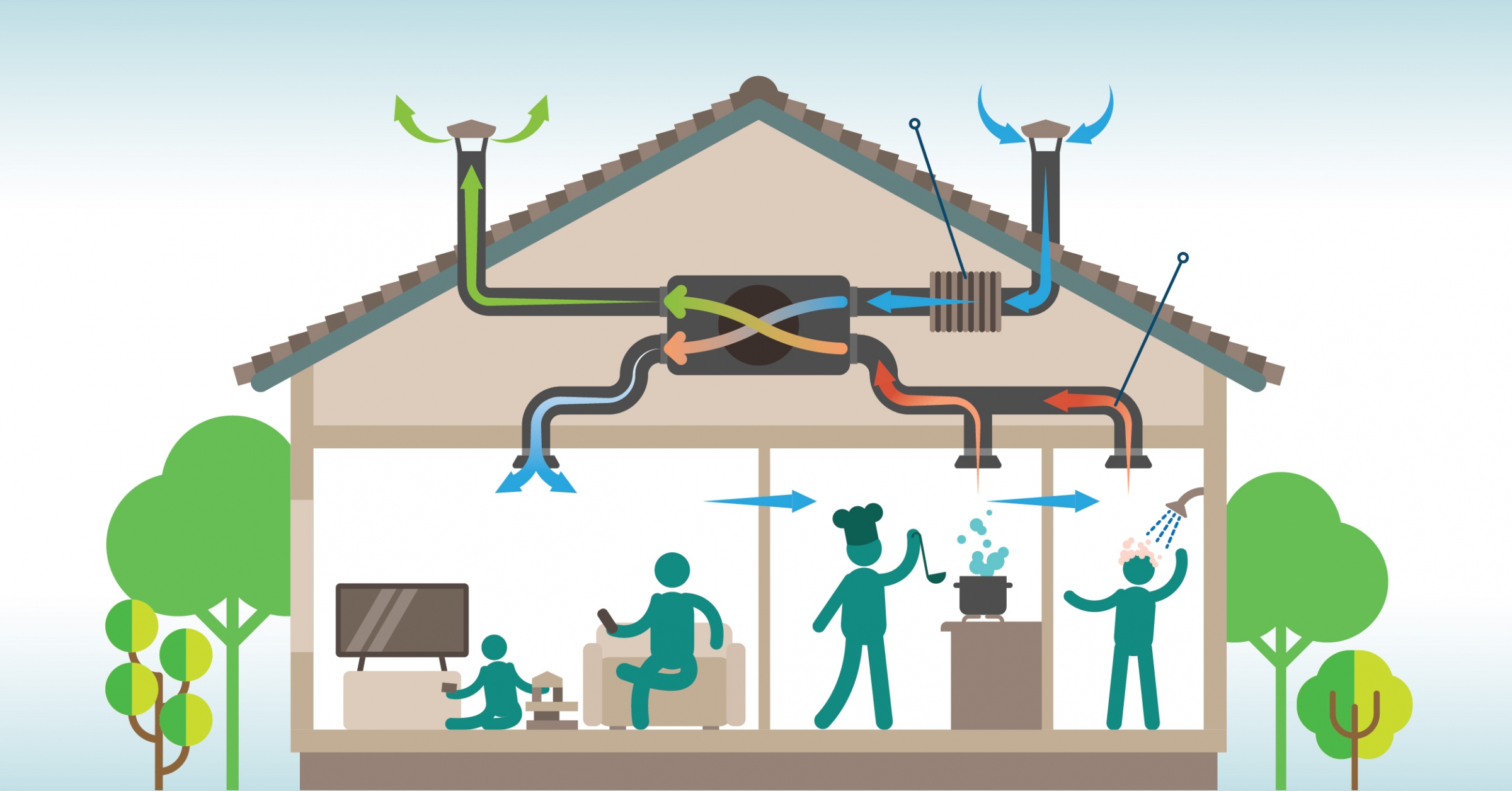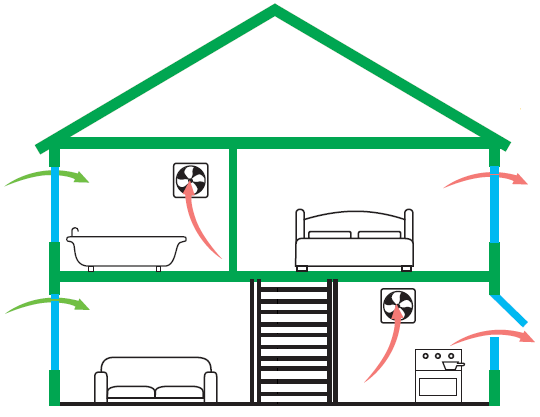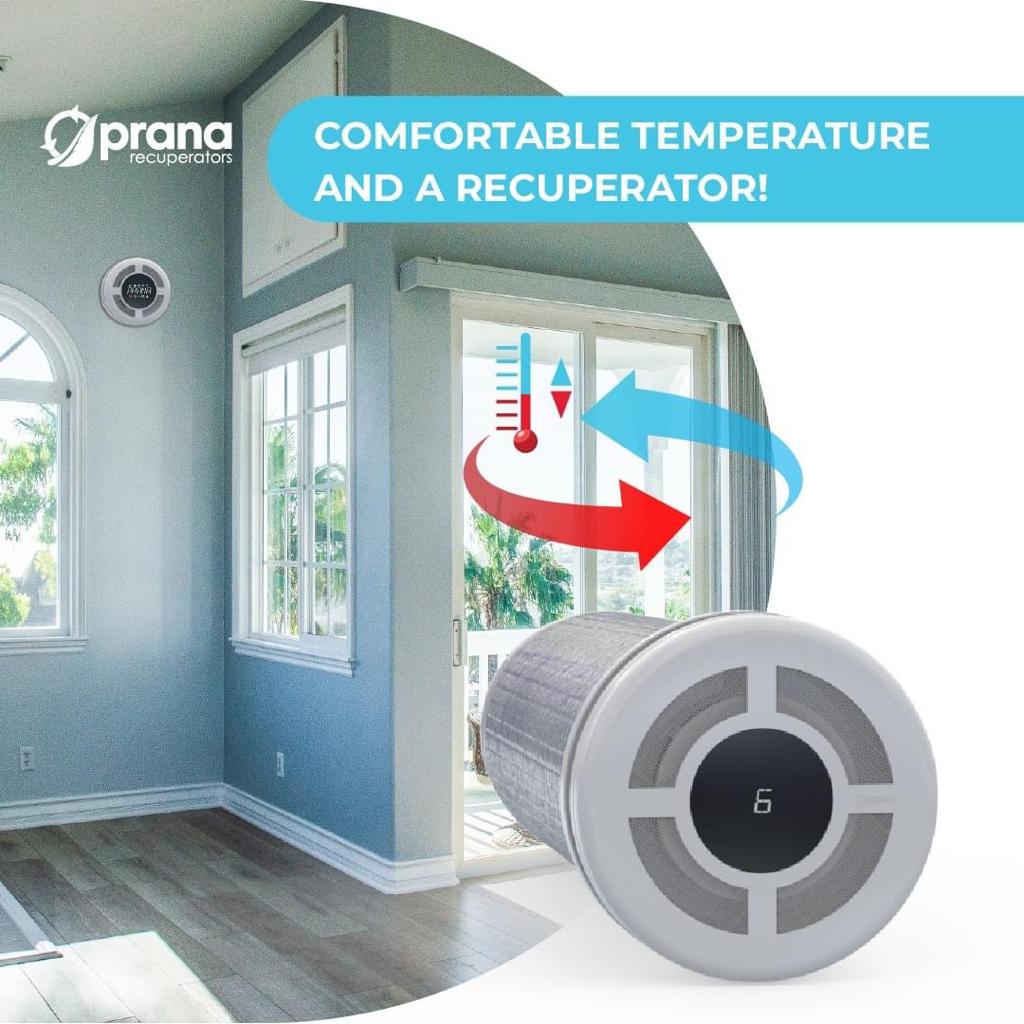Home Ventilation Melbourne: Best Practices for Year-Round Air Quality
Wiki Article
Recognizing the Significance of Home Ventilation for a Healthier Living Atmosphere
Home ventilation plays a crucial function in keeping a healthy living setting. It assists in the exchange of indoor and outside air, which is necessary for enhancing air high quality. Without correct air flow, homes can become breeding grounds for irritants and pollutants. The effects of insufficient air circulation can be substantial. This raises the query of how house owners can successfully carry out air flow techniques to secure their health and wellness and health. Understanding these methods is imperative.
The Fundamentals of Home Air Flow
Home ventilation serves as a vital part of indoor air quality and comfort. It entails the process of trading stale indoor air with fresh outdoor air, thus minimizing humidity and managing temperature level. Correct ventilation systems can consist of natural approaches, such as open windows and vents, as well as mechanical systems, such as exhaust followers and air exchangers. Efficient home ventilation helps prevent issues like indoor mold development and the accumulation of hazardous fragments. It also improves overall power effectiveness, as well-ventilated spaces can keep comfy temperatures with much less reliance on home heating and cooling down systems. Comprehending the essentials of home ventilation is vital for property owners seeking to develop a much healthier living environment for themselves and their families.
Common Resources of Indoor Air Pollution

Several may not realize it, interior air contamination can originate from different sources within a home. Usual factors consist of unstable organic compounds (VOCs) sent out from paints, solvents, and cleaning items. House home appliances, such as gas stoves and fireplaces, can release damaging gases like carbon monoxide and nitrogen dioxide. Furthermore, mold and mildew grow in moist locations, releasing spores that impact air high quality. Family pet dander, allergen, and plant pollen can accumulate inside, more intensifying pollution degrees. Smoking cigarettes inside produces harmful chemicals that remain in the air. Finally, building materials, consisting of asbestos and formaldehyde, can off-gas hazardous compounds. Recognizing these resources is essential for preserving a healthier interior environment and advertising reliable ventilation strategies.
Wellness Impacts of Poor Air Flow
Indoor air pollution can have considerable health and wellness implications, specifically when ventilation is poor. Poor ventilation can cause the buildup of harmful toxins, such as unpredictable natural substances, mold and mildew, and particle issue. This buildup might result in breathing issues, including asthma, allergic reactions, and persistent obstructive pulmonary disease. People may experience symptoms like frustrations, exhaustion, and irritability of the eyes, nose, and throat. Prone populaces, such as kids and the elderly, go to greater danger for extreme health and wellness effects. Long-term exposure to improperly aerated atmospheres can likewise contribute to more major conditions, consisting of heart diseases. Subsequently, making certain correct air flow is important for maintaining a healthy and balanced living setting and minimizing the threat of wellness issues related to interior air pollution.Effective Air Flow Strategies for Your Home
Proper air flow is crucial for keeping a healthy and balanced indoor environment, and applying reliable methods can considerably improve air high quality. Homeowners can start by ensuring that exhaust fans are mounted in bathroom and kitchens to get rid of excess dampness and smells. Opening up home windows regularly permits fresh air to circulate, particularly throughout light weather condition. Additionally, using air cleansers with HEPA filters can assist catch airborne contaminants. For homes with heating and cooling systems, preserving a/c systems and transforming filters frequently is important for peak performance. Including natural air flow strategies, such as cross-ventilation, can additionally enhance air movement. Securing any kind of leaks in home windows and doors avoids unwanted drafts, which can interrupt controlled air flow, inevitably leading to boosted indoor air quality and convenience.Maintaining Optimum Air Quality Year-Round
To keep excellent air quality year-round, house owners have to take on a positive approach to managing their interior setting. Routinely keeping track of indoor air top quality is essential; this includes monitoring for contaminants such as dust, mold and mildew, and unstable organic compounds (VOCs) Applying reliable ventilation systems, such as exhaust followers and air cleansers, can greatly lower airborne pollutants. In addition, routine upkeep of a/c systems assurances peak efficiency and air circulation. Home owners ought to likewise think about moisture levels, as extreme dampness can lead to mold growth. Seasonal adjustments may require changes in air flow techniques to fit differing exterior air quality. By prioritizing these practices, property owners can produce a much healthier home, promoting general well-being for all passengers throughout the year.Frequently Asked Inquiries
Just How Can I Tell if My Home Needs Much Better Air Flow?
To figure out if a home needs far better air flow, one need to observe signs such as consistent humidity, mold and mildew growth, musty odors, condensation on windows, or increased allergy signs and symptoms, suggesting inadequate airflow and possibly bad interior air high quality.What Are the Indicators of Poor Indoor Air Top Quality?

Can Houseplants Improve Indoor Air Quality Effectively?
The effectiveness of houseplants in improving indoor air high quality is disputed. While some researches recommend they can soak up contaminants and create oxygen, their overall influence may be marginal contrasted to proper air flow and air purification systems.Just how Usually Should I Change My Air Filters?
The frequency of air filter changes typically depends upon usage and filter type. Normally, it is advised to change filters every 3 months, though homes with pet dogs or allergies might require even more constant modifications for optimal performance.Are There Any Type Of Particular Air Flow Systems for Allergic Reaction Sufferers?
Lots of air flow systems, such as HEPA-filtered systems, properly lower allergens in the air. Home Ventilation Melbourne. These systems catch dirt, pollen, and pet dog dander, offering allergic reaction victims with a cleaner, much healthier indoor atmosphere while managing air high quality efficiently
It facilitates the exchange of outside and interior air, which is important for enhancing air top quality. Home ventilation offers as a crucial part of indoor air top quality and convenience. It includes the process of trading stagnant interior air with fresh exterior air, thereby reducing moisture and regulating temperature level. Indoor air contamination can have significant wellness implications, specifically when ventilation is inadequate. Appropriate air flow is important for maintaining a healthy indoor atmosphere, and applying reliable strategies can considerably boost air quality.
Report this wiki page